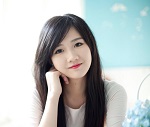Đề thi thử THPT quốc gia năm 2017 môn Tiếng Anh trường THPT Võ Thị Sáu (Có đáp án), Đề thi thử THPT quốc gia năm 2017 môn Tiếng Anh trường THPT Võ Thị Sáu là tài
Đề thi thử THPT Quốc gia năm 2017 môn Tiếng Anh
Với mong muốn cung cấp thêm nhiều tài liệu ôn tập hữu ích dành cho các bạn học sinh lớp 12. Tài Liệu Học Thi xin gửi đến các bạn Đề thi thử THPT quốc gia năm 2017 môn Tiếng Anh trường THPT Võ Thị Sáu. Đề thi có cấu trúc bám sát với cấu trúc đề thi THPT quốc gia 2017 môn tiếng Anh của Bộ GD&ĐT sẽ giúp các bạn làm quen với cấu trúc đề thi và rút kinh nghiệm cho bài thi tốt nghiệp THPT quốc gia 2017 sắp tới.
Đề thi thử THPT Quốc gia năm 2017 môn Tiếng Anh Sở GD&ĐT Thanh Hóa có đáp án
Mark the letter A, B, C, or D on your answer sheet to indicate the word whose underlined part differs from the other three in pronunciation in each of the following questions.
Question 1: A. element B. dedicate C. event D. devote
Question 2: A. goes B. raises C. devises D. advises
Mark the letter A, B, C, or D on your answer sheet to indicate the word that differs from the other three in the position of primary stress in each of the following questions.
Question 3: A. explain B. involve C. purpose D. advise
Question 4: A. different B. terrorist C. contrary D. domestic
Mark the letter A, B, C, or D on your answer sheet to indicate the underlined part that needs correction in each of the following questions.
Question 5: He passed the exams with high scores, that made his parents happy.
A B C D
Question 6: Because her sickness she didn’t take part in the English competition held in Sunday.
A B C D
Question 7: The teacher together with his students have finished their project on time.
A B C D
Mark the letter A, B, C, or D on your answer sheet to indicate the correct answer to each of the following questions.
Question 8: John is _______ only child in his family so his parents love him a lot.
A. a B. an C. the D. Ø
Question 9: Billy has been seriously ill, and he was taken to _____ hospital yesterday
A. a B. an C. the D. Ø
Question 10: The more demanding the job is, I like it.
A. more B. most C. the more D. the most
Question 11: The baby _______.
A. was sleeping depth B. was slept deeply C. slept in depth D. was sleeping deeply
Question 12: Richard, my neighbor, in World War II.
A. says to fight B. says to have fought C. is said to fight D. is said to have fought
Question 13: Students are less pressure as a result of changes in testing procedures.
A. under B. above C. upon D. out of
Question 14: Tom I am so _______ that I cannot say anything, but keep silent.
A. nerve B. nervous C. nervously D. nervousness
Question 15: The world’s biodiversity is declining at an unprecedented rate, which makes wildlife _______.
A. prosperous B. prefect C. vulnerable D. remained
Question 16: A number of young teachers nowadays themselves to teaching disadvantaged children. A. offer B. stick C. give D. devote
Question 17: He was _____ when I had those problems and said whatever I did he would stand by me.
A. supportive B. exciting C. busy D. dull
Question 18: Go _______ this book because it has the information you need.
A. over B. by C. off D. on
Question 19: Although the team was both mentally and physically exhausted, they ____on walking.
A. stopped B. kept C. took D. pu
Mark the letter A, B, C, or D on your answer sheet to indicate the most suitable response to complete each of the following exchanges.
Question 20: Two friends Hung and Hoa are talking about Hoa’s party.
– Hung: ―thank you very much for your lovely party , Hoa. – Hoa: ― ________________________ .
A. Cheers B. Have a good day. C. Thank you. D. You’re welcome.
Question 21: Peter is talking about his father’health.
– Perter: ―My father’s much better now. – Tom: ― _______________________ .
A. Oh, I’m pleased to hear it B. Oh, really ? The doctor must be very good
C. Good news for you D. Wonderful. Congratulation!
Mark the letter A, B, C, or D on your answer sheet to indicate the word(s) CLOSEST in meaning to the underlined word(s) in each of the following questions.
Question 22: The situation seems to be changing minute by minute.
A. very rapidly B. time after time C. again and again D. from time to time
Question 23: It took me a very long time to recover from the shock of her death.
A. turn off B. take on C. get over D. keep up with
Mark the letter A, B, C, or D on your answer sheet to indicate the word(s) OPPOSITE in meaning to the underlined word(s) in each of the following questions.
Question 24: The Red Cross is an international humanitarian agency dedicated to reducing the sufferings of wounded soldiers, civilians and prisoners of war.
A. happiness B. worry and sadness C. pain and sorrow D. loss
Question 25: She was unhappy that she lost contact with a lot of her old friends when she went abroad to study.
A. made room for B. put in charge of C. lost control of D. got in touch with
Mark the letter A, B, C, or D on your answer sheet to indicate the sentence that is closest in meaning to each of the following questions.
Question 26: I have not seen Tom for ages.
A. It has been a long time .since I last saw Tom. B. Tom and I do not look the same age.
C. Tom and I are friends for a long time. D. I often met Tom ages ago.
Question 27: “How beautiful is the dress you have just bought!” Peter said to Mary.
A. Peter promised to buy Mary a beautiful dress.
B. Peter said thanks to Mary for her beautiful dress.
C. Peter complimented Mary on her beautiful dress.
D. Peter asked Mary how she had just bought her beautiful dress.
Question 28: If you honor me, I will appreciate it.
A. If I am to be honored, it is to be appreciated. B. Thank you for your appreciation to honor me.
C. Because of your honor, I will appreciate. D. You are appreciated to honor me.
Mark the letter A, B, C, or D on your answer sheet to indicate the sentence that can be made from the words given:
Question 29: Just imagine / human life / be like / 20 years.
A. Just imagine how human life will be like for 20 years.
B. Just imagine human life will be like in 20 years.
C. Just imagine what human life will be like in 20 years.
D. Just imagine that human life will be like since 20 years.
Question30: / read / advertisement / your company / today’s newspaper.
A. I would like to read the advertisement of your company on today’s newspaper.
B. I have just read the advertisement of your company in today’s newspaper.
C. I enjoy reading the advertisement from your company in today’s newspaper.
D. I read the .advertisement which is of your company in today’s newspaper-
Read the following passage and mark the letter A, B, C, or D on your answer sheet to indicate the correct word or phrase that best fits each of the numbered blanks from 31 to 35.
After a busy day of work and play, the body needs to rest. Sleep is necessary for good health. During this time, the body recovers from the (31) ______ of the day. The rest that you get while sleeping makes it possible for your body to prepare itself for the next day.
There are four levels of sleep, each being a little (32) ______ than the one before. As you sleep, your body relaxes little by little. Your heart beats more slowly, and your brain slows down. After you reach the fourth level, your body shifts back and forth from one level to the other.
(33) ______ your mind slows down, you will dream from time to time. Scientists who study sleep point out that when dreaming occurs, your eyeballs begin to move more quickly. This stage of sleep is called REM, which (34)______ rapid eye movement.
If you have trouble falling asleep, some people recommend breathing very slowly and very deeply. Other people believe that drinking warm milk will make you (35) ______ . There is also an old suggestion that counting sheep will put you to sleep.
Question 31: A. acts B. actions C. activities D. activeness
Question 32: A. deeper B. lighter C. shorter D. higher
Question 33: A. Because B. Although C. Despite D. As
Question 34: A. sends for B. calls for C. searchs for D. stands for
Question 35: A. tired B. drowsy C. dizzy D. awake
Read the following passage and mark the letter A, B, C, or D on your answer sheet to indicate the correct answer to each of the questions from 36 to 43.
All mammals feed their young. Beluga whale mothers, for example, nurse their calves for some twenty months, until they are about to give birth again and their young are able to find their own food. The behavior of feeding of the young is built into the reproductive system. It is a non-elective part of parental care and the defining feature of a mammal, the most important thing that mammals – whether marsupials, platypuses, spiny anteaters, or placental mammals – have in common.
But not all animal parents, even those that tend their offspring to the point of hatching or birth, feed their young. Most egg-guarding fish do not, for the simple reason that their young are so much smaller than the parents and eat food that is also much smaller than the food eaten by adults. In reptiles, the crocodile mother protects her young after they have hatched and takes them down to the water, where they will find food, but she does not actually feed them. Few insects feed their young after hatching, but some make other arrangement, provisioning their cells and nests with caterpillars and spiders that they have paralyzed with their venom and stored in a state of suspended animation so that their larvae might have a supply of fresh food when they hatch.
For animals other than mammals, then, feeding is not intrinsic to parental care. Animals add it to their reproductive strategies to give them an edge in their lifelong quest for descendants. The most vulnerable moment in any animal’s life is when it first finds itself completely on its own, when it must forage and fend for itself. Feeding postpones that moment until a young animal has grown to such a size that it is better able to cope. The young that are fed by their parents become nutritionally independent at a much greater fraction of their full adult size. And in the meantime those young are shielded against the vagaries of fluctuating of difficult – to- find supplies. Once a species does take the step of feeding its young, the young become totally dependent on the extra effort. If both parents are removed, the young generally do not survive.
Question 36: What does the passage mainly discuss?
A. The care that various animals gives to their offspring.
B. The difficulties young animals face in obtaining food.
C. The methods that mammals use to nurse their young.
D. The importance among young mammals of becoming independent.
Question 37: The author lists various animals in the first paragraph to ______.
A. contrast the feeding habits of different types of mammals
B. describe the process by which mammals came to be defined
C. emphasize the point that every type of mammals feeds its own young
D. explain why a particular feature of mammals is non-elective
Question 38: The word “tend” in the second paragraph is closet in meaning to ______.
A. sit on B. move C. notice D. care for
Question 39: What can be inferred from the passage about the practice of animal parents feeding their young?
A. It is unknown among fish. B. It is unrelated to the size of the young.
C. It is dangerous for the parents. D. It is most common among mammals.
Question 40: The word “provisioning” in the second paragraph is closet in meaning to ______.
A. supplying B. preparing C. building D. expanding
Question 41: According to the passage, how do some insects make sure their young have food?
A. By storing food near their young.
B. By locating their nests or cells near spiders and caterpillars.
C. By searching for food some distance from their nest
D. By gathering food from a nearby water source.
Question 42: The word “it” in the third paragraph refers to ______.
A. feeding B. young animal C. moment D. size
Question 43: According to the passage, animal young are most defenseless when ______.
A. their parents are away searching for food B. their parents have many young to feed
C. they are only a few days old D. they first become independent
Read the following passage and mark the letter A, B, C, or D on your answer sheet to indicate the correct answer to each of the questions from 44 to 50.
Comets are bodies that move around in space. They are something likes stars or small planets that move around the sun. Comets are surrounded by gases and the sun makes those gases look very bright. Dust can get caught in the gas around the comet and make the comet look like it has a tails.
Halley’s Comet is the most famous comet, but we can’t see it very often. In fact, it can only be seen from the Earth when it moves close the sun. This means that this beautiful comet only comes into our sky every 77 years or so. The last time Halley’s Comet was invisible from the Earth was in 1991. Did you see it?
Halley’s Comet was named after the English astronomer Edmond Halley. An astronomer studies the star and planets in the solar system. Edmond Halley was born in London, England, in 1656. He studies astronomy at Oxford University. In 1676, he left the university to study the astronomy of the Southern Hemisphere. He wrote a brook about the arrangement of the stars in the sky and the movement of the planets. He made the first accurate map of the stars we see in the sky. He also observed the moon and studied how the Moon affects the ocean tides. He helped find a way to measure distances in space. This measurement was used by other scientists to learn about the size of our solar system and the distances of many star and planets from the Earth.
Halley especially liked to study comets. He read about comets and observed them in the sky. He learned about the way they moved around the Sun — each comet follows a different path around the Sun and travels at its own speed. The path and speed of a body as it moves in space is called its orbit. Halley calculated the orbits of comets that he read about or saw himself. He found the orbits for twenty-four comets.
Halley also noticed that the paths of a comet seen in 1531 and of a comet seen in 1607 were identical to the path of a comet he had observed in 1682. He concluded that these three comets were, in fact, the same comet. Halley predicted that the comet would come again in 1758, and it did! This comet was named “Halley’s Comet” and can be seen from Earth. The first reports of this comet in history were made in 240 B.C. by Chinese astronomers, so we know that it has been orbiting the Sun to more than 2,000 years. Halley’s Comet is not the only comet in our sky, but it is the only one that appears regularly and can be predicted. It is also one of the brightest comets, and people can see it without a telescope. Like comets, the Earth also travels around the Sun. Sometimes the orbit of t Earth passes through the path of Hailey’s Comet. Like comets, the Earth also travels around the Sun. Sometimes the orbit of the Earth passes through the path of Hailey’s Comet. When this When this happens, dust left behind from the comet falls to Earth. The dust burns and makes brilliant lights like falling stars in the sky. You can see this happen every year in May and October. Astronomers predict that Hailey’s Comet will enter our sky again in 2061. Who do you think will see it?
Question 44: Which of the following is NOT TRUE of Hailey’s Comet?
A. It won’t appear again until 2061. B. Chinese astronomers named it “Halley’s Comet.”
C. It is predictable. D. It is bright.
Question 45: Comets move around__________.
A. every 77 years. B. in the Southern Hemisphere C. the Sun. D. the Earth
Question 46: Comets may look like they have a tail because__________.
A. gases surround the comet B. dust can get caught in the gas around the comet
C. the Sun is very bright D. they appear like bright white stars in the sky
Question 47: Edmond Hailey calculated the orbits for__________.
A. 1607 B. 1682 C. 77 comets D. 24 comets
Question 48: In 240 B.C. __________.
A. there were no comets in the sky B. Chinese astronomers first observed Halley’s comet
C. Halley was born in London, England D. Halley’s Comet did not appear in the sky
Question 49: Which of the following is NOT true?
A. Halley’s Comet can be seen from Earth with naked eyes.
B. Halley’s prediction of the comet’s re-appearance in 1758 was right.
C. He observed the comet of 1682 and named it “Helley’s Comet.”
D. The comets of 1531, 1607 and 1682 were, in fact, the same comet.
Question 50: One of Hailey’s contributions to astronomy was__________.
A. giving a name to one of the most famous comets
B. drawing a map of the Southern Hemisphere
C. finding a way to measure distances in space
D. founding the astronomy department at Oxford University
———–THE END———-
Đáp án đề thi thử THPT quốc gia 2017 môn Tiếng Anh
|
Question |
Answer |
Question |
Answer |
Question |
Answer |
Question |
Answer |
Question |
Answer |
|
1 |
D |
11 |
D |
21 |
A |
31 |
C |
41 |
A |
|
2 |
A |
12 |
D |
22 |
A |
32 |
A |
42 |
A |
|
3 |
C |
13 |
A |
23 |
C |
33 |
B |
43 |
D |
|
4 |
D |
14 |
B |
24 |
A |
34 |
D |
44 |
B |
|
5 |
D |
15 |
C |
25 |
D |
35 |
B |
45 |
C |
|
6 |
A |
16 |
D |
26 |
A |
36 |
A |
46 |
B |
|
7 |
C |
17 |
A |
27 |
C |
37 |
C |
47 |
D |
|
8 |
C |
18 |
A |
28 |
A |
38 |
D |
48 |
B |
|
9 |
D |
19 |
B |
29 |
C |
39 |
D |
49 |
C |
|
10 |
C |
20 |
D |
30 |
A |
40 |
A |
50 |
C |











